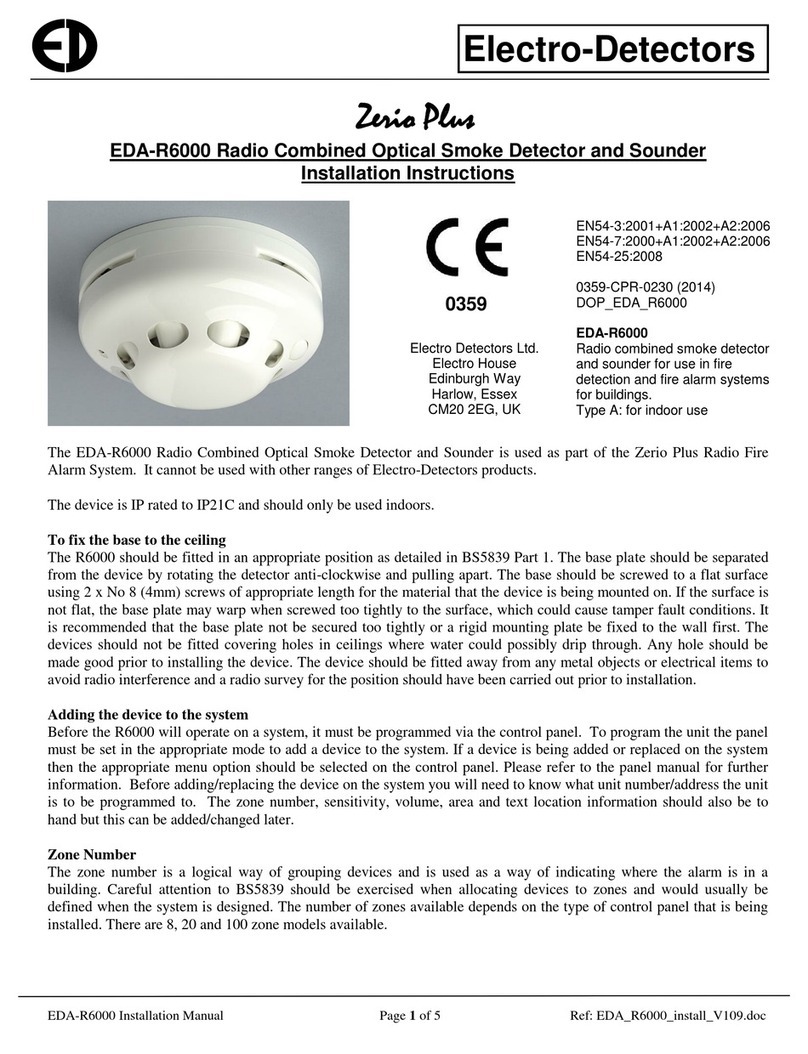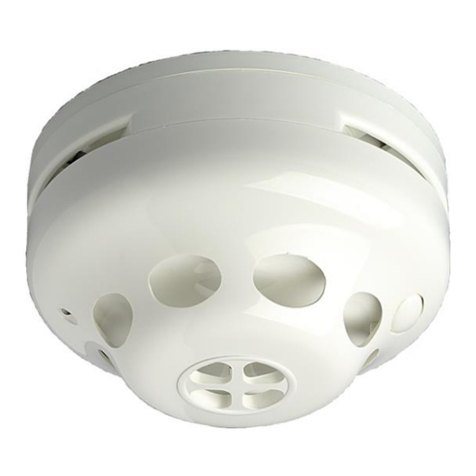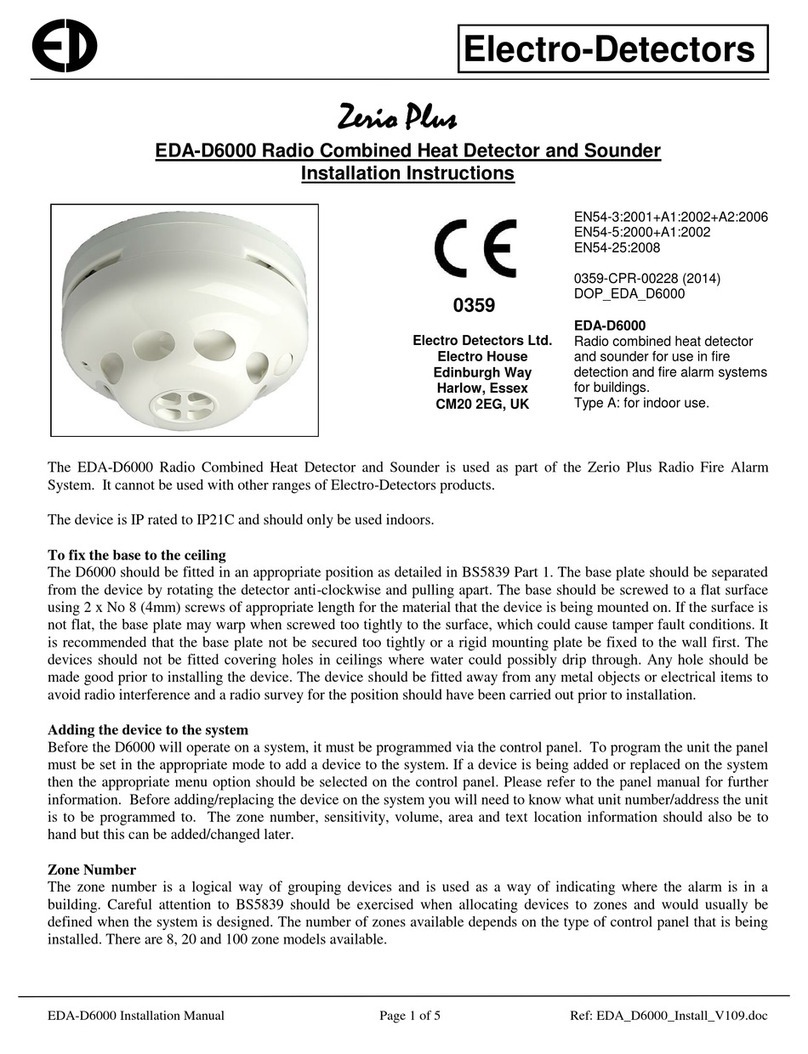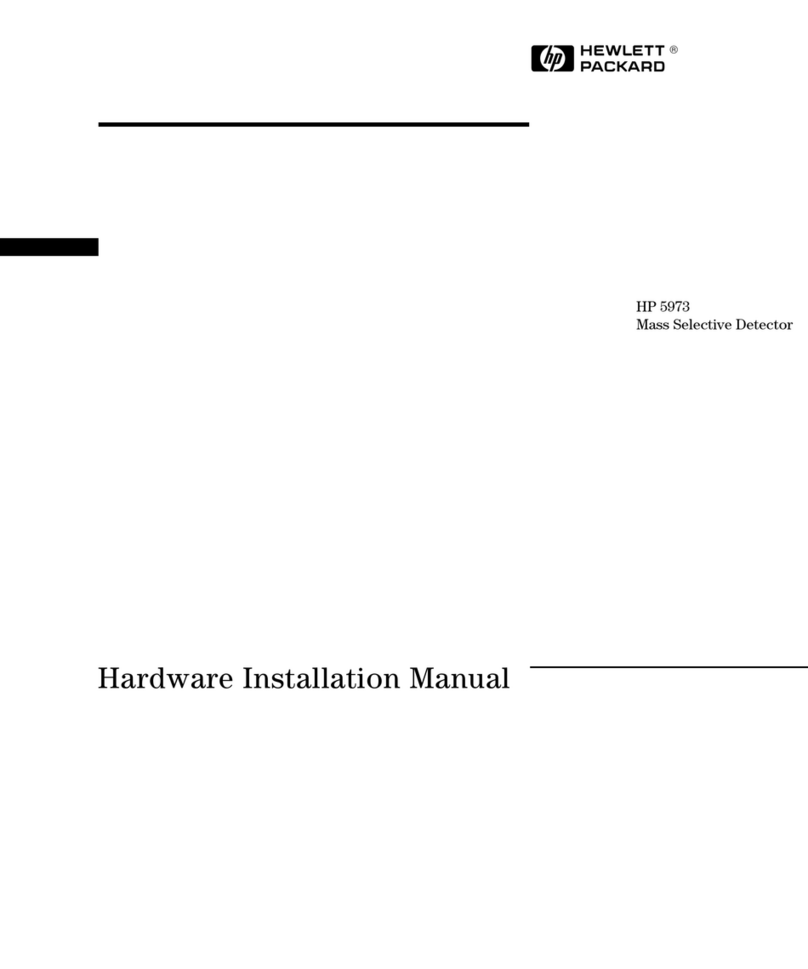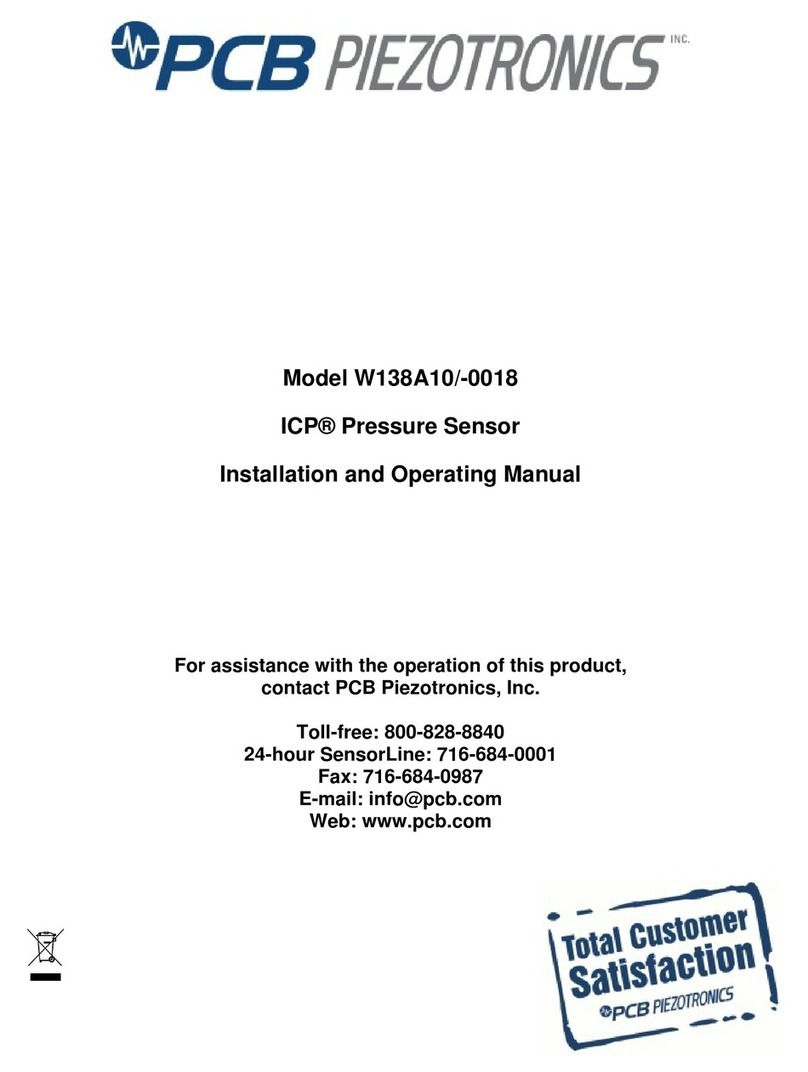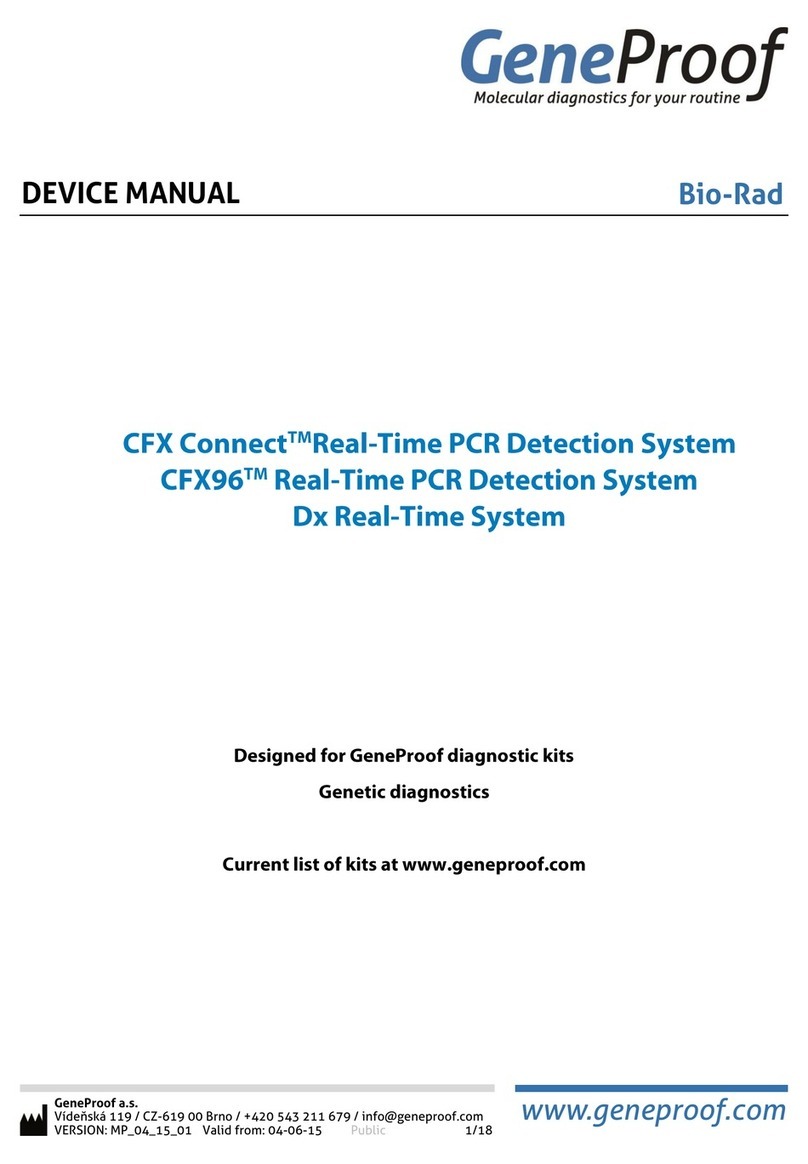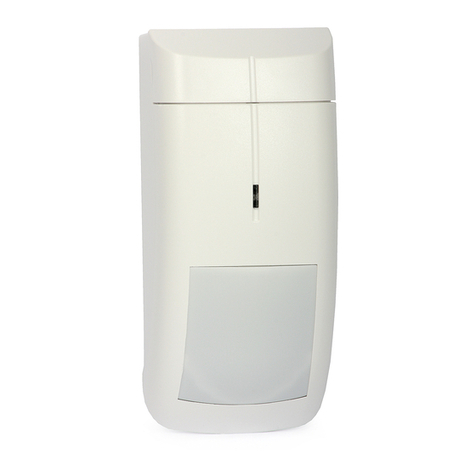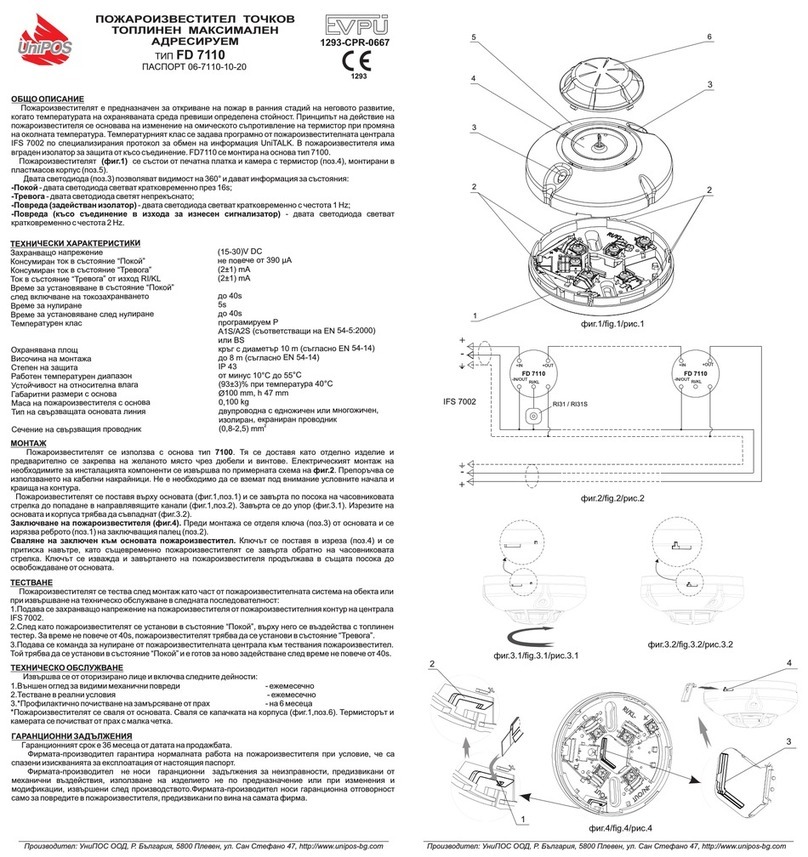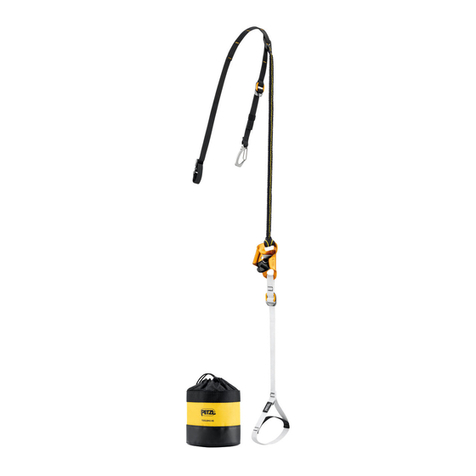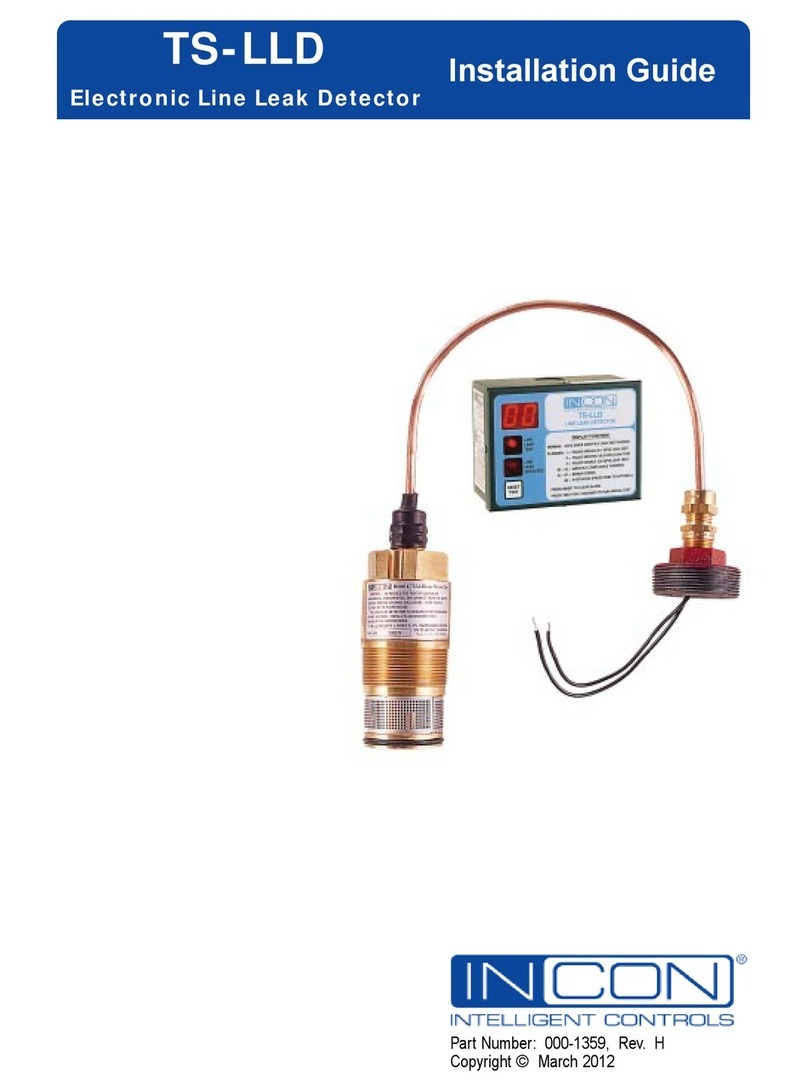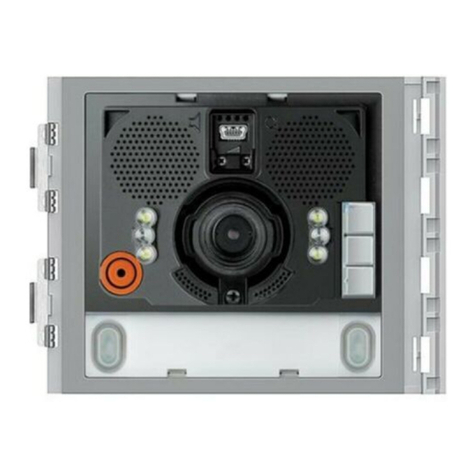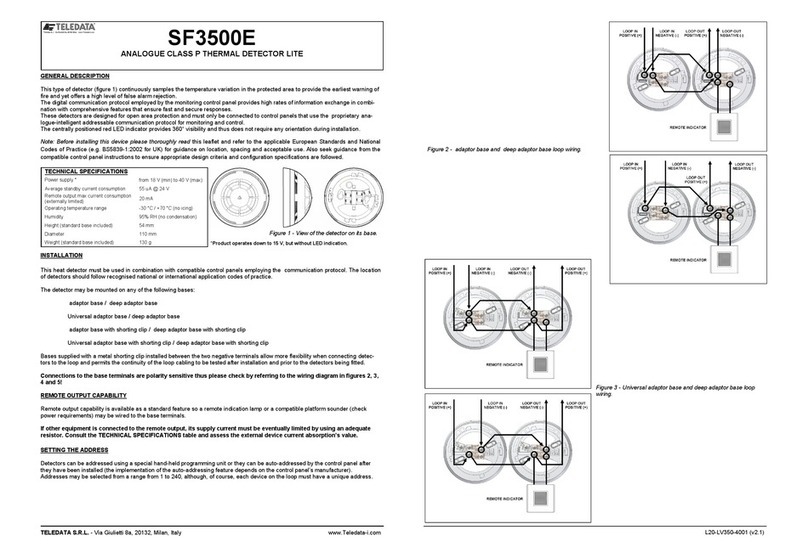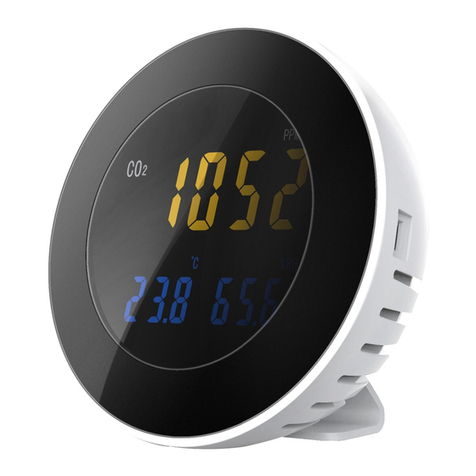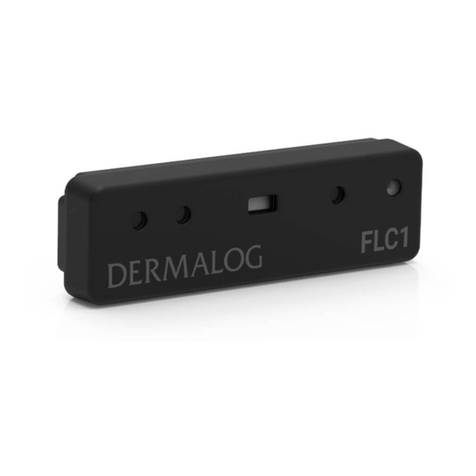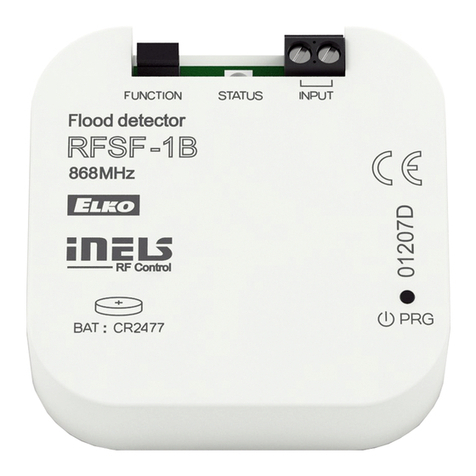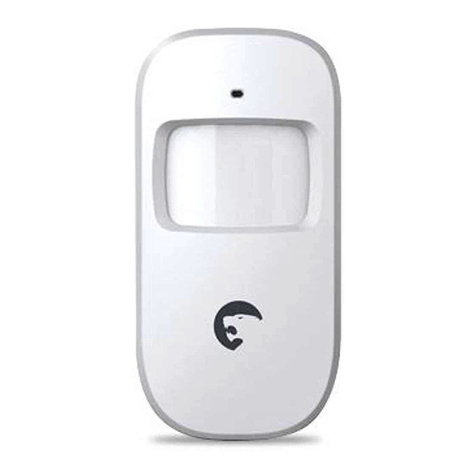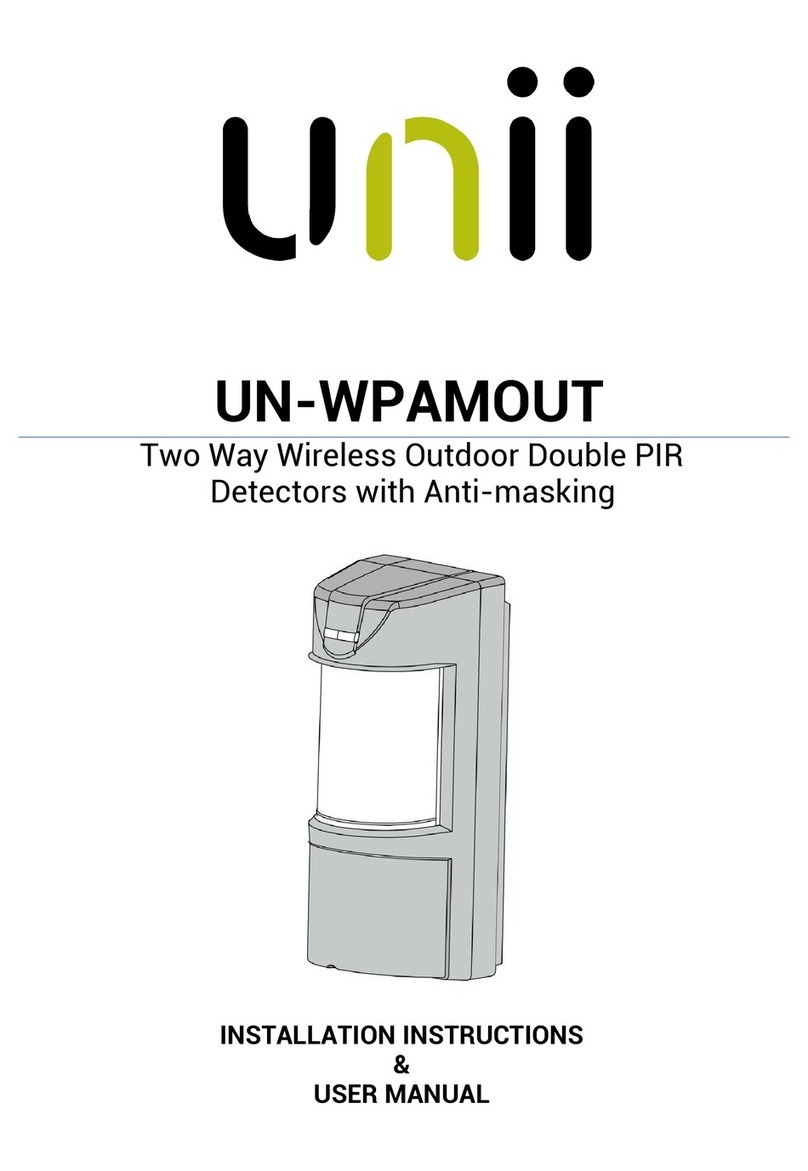Electro Detectors EDA-D5000 User manual

EDA-D5000 Installation Manual Page 1 of 3 Ref: EDA_D5000_Install_V105.doc
Electro-Detectors
Zerio Plus
EDA-D5000 Radio Heat Detector Installation Instructions
The EDA-D5000 Radio Heat Detector is used as part of the Zerio Plus Radio Fire Alarm System. It cannot be used with
other ranges of Electro-Detectors products.
To fix the unit to the ceiling
The heat detector should be fitted in an appropriate position as detailed in BS5839 Part 1. The base plate should be
separated from the unit by rotating the detector anti-clockwise and pulling apart. The base should be screwed to a flat
surface using 2 x No 6 screws of appropriate length for the material that the unit is being mounted on. It is
recommended that the base should be used as a template for the screw holes. If the surface is not flat, the unit may
buckle and cause tamper conditions, when screwed tightly to the surface. It is recommended that the units not be
secured too tightly or a rigid mounting plate be fixed to the wall first. The units should not be fitted covering holes in
ceilings where water could possible drip through. Any hole should be made good prior to installing the detector. The
unit should be fitted away from any metal objects or electrical items to avoid radio interference and a radio survey for
the position should have been carried out prior to installation.
Adding the device to the system
Before the unit will operate on a system, it must be programmed via the control panel. To program the unit the panel
must be set in the appropriate mode to add a device to the system. If a device is being added or replaced on the system
then the appropriate menu option should be selected on the control panel. Please refer to the panel manual for further
information. Before adding/replacing the device on the system you will need to know what unit number/address the unit
is to be programmed to. The zone number, sensitivity and text location information should also be to hand but this can
be added/changed later.
Zone Number
The zone number is a logical way of grouping devices and is used as a way of indicating where the alarm is in a
building. Careful attention to BS5839 should be exercised when allocating devices to zones and would usually be
defined when the system is designed. The number of zones available depends on the type of control panel that is being
installed. There are 8, 20 and 100 zone models available.
0359
Electro Detectors Ltd.
Electro House
Edinburgh Way
Harlow, Essex
CM20 2EG, UK
EN54-5:2000+A1:2002
EN54-25:2008
0359-CPR-00227 (2014)
DOP_EDA_D5000
EDA-D5000
Radio heat detector for
use in fire detection and
fire alarm systems for
buildings.

EDA-D5000 Installation Manual Page 2 of 3 Ref: EDA_D5000_Install_V105.doc
Electro-Detectors
Type
There are a number of different kinds of heat detectors that can be used. The A1S type should be used for systems that
have been designed to meet EN54 part 5. Although the A1R setting conforms to the specification it has not been 3rd
party tested.
A1S As specified by EN54 part 5, A1S detectors are intended for use in applications where
the ambient temperature is typically around 25oC and not expected to exceed 50oC. A1S
detectors will not respond below their minimum static response temperature of 54oC,
regardless of a rapid change in ambient temperature.
A1R As specified by EN54 part 5, an A1R detector is a rate of rise detector with a fixed upper
limit of 57oC, at which the device will go into alarm if the rate of rise has been too slow
to trigger the alarm earlier.
Fixed Point The device will go into alarm once the temperature reaches this point. The user can
specify an alarm temperature from 50 –99oC.
Rate of Rise The device will go into alarm when it senses a rapid increase in temperature. The user
can choose from 3 levels of sensitivity. 0.5, 1.0 and 2oC per minute
Alarm Verify
The time period, in seconds, that a detector remains in alarm before sending an alarm signal.
Range: 1 to 20 seconds
The recommended value which conforms with third party type approval tests is 2 Seconds
To put the heat detector into log mode, follow the procedure below:-
1. The panel will need to be put into ‘add device’, ‘replace device’ or new set-up mode
2. Remove the base by rotating the detector anti-clockwise and pulling apart.
3. Ensure the power jumper is removed.
4. Press and hold the unit removal peg and the reset button on the front of the detector simultaneously.
5. With these buttons both pressed down, fit the power link.
6. If the mode is successfully selected the LED on the front of the unit will glow green.
7. Both buttons can now be released.
8. The panel will indicate that it has found a device of type heat detector.
9. Confirm this on the panel and select the correct zone number.
10. The panel will now ask whether to use default values or custom settings. Select which option you require.
Default values will meet the relevant parts of EN54.
11. Follow the instructions on the screen selecting the appropriate values. The selections can be made by using the
cursor keys. The available settings in the advanced menu, which are described above, are as follows.
Zone Number Type Alarm Verify
Fitting the unit to the ceiling.
If not already fitted, the power link should be fitted on the ON position. When applied, the unit will beep and the LED
will flash initially green. It will then flash red once a second indicating the unit removal condition. When fitting the unit
to its base the red marking on the base should be aligned with the led on the outer case. The detector should be located
in the base and rotated clockwise. Once mounted correctly press the reset button for about a second until it beeps. The
LED should stop flashing if the unit is mounted correctly.
Should the unit detect enough heat, it will indicate the alarm condition by illuminating the LED red. The
internal buzzer on the detector will also beep. An alarm transmission will be made to the control panel and
the alarm will be indicated on the panel.

EDA-D5000 Installation Manual Page 3 of 3 Ref: EDA_D5000_Install_V105.doc
Electro-Detectors
To change the battery in the detector:- replacement part: 1 x EDA-Q690
The battery should last approximately five years in the heat detector. Always use batteries supplied by Electro Detectors
otherwise this will invalidate the certification. Many similar battery technologies are available but only the ones that
meet certain properties can be used with these units. The battery pack is fitted with 2xAA Lithium Thynol Chloride
cells. Min voltage 3.0V, Max 3.7V. When the battery is approaching its end of life the unit will transmit a low battery
condition, which will be indicated on the control panel. The system will still function for at least a further 60 days in
this condition before the unit fails to operate. Once the batteries are too flat to operate, the unit will either indicate a
“verify fail” fault, because the panel has lost communication with the device, or a battery fault will be displayed.
Should either of these be witnessed, the batteries should be changed immediately. If the unit detects a fault with the
battery a ‘battery fault’ will be indicated on the panel. Therefore:-
1. Remove the detector from the base by rotating the detector anti-clockwise and separating the unit.
2. Remove the power link.
3. Remove the back plate by removing the two screws
4. Remove the old battery pack.
5. Fit the new battery pack making sure the battery’s pins are lined up and pressed down.
6. Re-fit the back plate.
7. Press and hold the unit removal and reset button simultaneously.
8. With these buttons pressed down, fit the power link.
9. Let the unit go into its log-on mode, (it will beep) and keep the buttons pressed down.
10. After another 5 seconds a second BEEP will sound, at this point release the buttons. This will re-set the battery
counter after a further 15 minutes. If you realise that you didn’t want to reset the counter, then power the unit
down by removing the power pin. Leave for 5 seconds and re-apply the power. The counter will not reset.
11. Refit the device onto its base.
Faults displayed on the control panel from heat detectors:-
Low Battery: The batteries are approaching their end of life. The unit will continue to operate for a further 60
days before the batteries need to be changed.
Verify Fail: The panel has lost communication with the device, this could be caused by the batteries being flat, the
unit failing to operate, something obstructing the radio signal path or the device not being installed correctly with an
adequate signal strength.
Battery Fault: The unit has detected a problem with the battery.
Unit Removal: If the unit is removed from its base, the panel will display a unit removal/tamper fault.
Tx/Rx Fault: A failure with the transmit / receive module of the device. It is suggested that the fault should be reset
and if the same fault occurs within 60 minutes the unit be replaced.
Int Fault: The unit has detected an internal problem with the way it is operating. There are several faults that can
cause this but the usual way of solving the problem is to replace the unit or return it for repair. It is suggested that
the fault should be reset and if the same fault occurs within 60 minutes the unit be replaced. The faults can relate to
the operation of the sensing head, if fitted, the micro-processor controlling the device, its internal memory and a
host more.
Table of contents
Other Electro Detectors Security Sensor manuals
